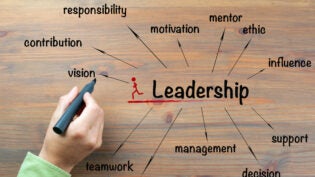
If you expect to effectively recruit and retain talent in this dynamic and evolving environment in which COVID-19 is not completely gone but has markedly waned, you simply must prioritize improving the employee experience.
This is true no matter your company size or whether most of your employees are working remotely, are returning to worksites, or something in between. Most employees are feeling something: uncertainty, anxiety, or isolation – or all that.
And while it’s important for you to make changes, and make them fast, it’s crucial that you first determine the needs and wants of the people who will be affected. That means listening to how employees feel at work.
With that in mind, here’s what you should know about implementing employee experience insights.
What is the Employee Experience?
Throughout their tenure with an organization, employees observe, perceive, and encounter a lot. The employee experience encapsulates all that.
Why is the Employee Experience Important?
Happier employees are more engaged, productive, and motivated, all of which make for a healthier bottom line.
A great employee experience also goes directly to the recruitment and retention of talent you need, particularly in this tight labor force in which individuals have more say in terms of where and how they want to work.
The problem is that a 2019 Gartner study found that just 13 percent of employees were fully satisfied with their experience. And that was before the disruption and tumult caused by the pandemic.
Building the Employee Experience into the Culture
You need a certain mindset when designing an employee experience strategy. That means building a holistic, people-centric approach into your culture and making that part of your organization’s core values. If you truly prioritize your people, they’ll reward you for it.
Evaluate What You’re Doing Now
Now you must assess your existing people management strategy, zeroing in on three areas:
- Cultural. This is how employees feel about the organizational leadership style, structure, their pay and benefits, etc.
- Physical. This encompasses the everything the employee sees, hears, or touches, including remote office equipment, art, desks, chairs, etc.
- Technological. This is how employees experience the tools they use to do their jobs (desktop computers, user interface, etc.)
The top means of gauging how your employees currently feel about their experience is through regular listening beyond the annual employee engagement survey. You should be doing regular “pulse” surveys and putting in place strategic listening programs that meld the proper methodologies with agile technology. You also need integrative analytics and actionable insights.
Pinpoint Drivers of Unfavorable Employee Experience
After you’ve heard from your people, you can then determine what’s creating negative employee experiences. Then based on what you’ve gleaned, you can define goals that explicitly affect your employees’ overarching working experience, engagement, and retention.
Objectives can include scrapping cross-departmental silos, making sure managers are apprised of the importance of employee feedback and retention, putting in place new technologies that makes remote workers feel more connected, and implementing innovative employee wellbeing programs.
Ultimately, implementing employee experience insights first requires a sound strategy for gaining such insights. As employers invest in the enhancing the employee experience, they must gauge impact in novel ways. That means “listening” to employees throughout the employee lifecycle – not just via the requisite annual survey. In fact, if you pose the right questions at the right time, you can continuously craft interventions to improve what employees experience.
We suggest that you check out what Mercer does in this area. The leading global consultant conducts research that encompasses all aspects of the employee experience, from employee engagement and team effectiveness to leadership and organizational culture. And it has the experience to pull it all off.
1945 Views












